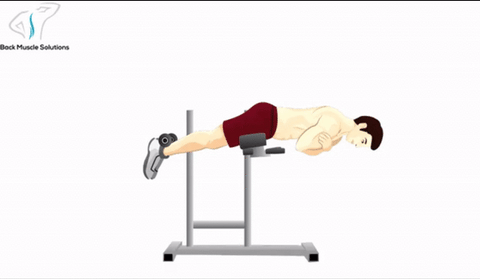The glute ham raise has always been a controversial exercise in the fitness world. From being called one of the best hamstrings and glute exercises to one of the most dangerous knee flexion and extension exercises, it's no secret that the glute ham raise is on more of the advanced side of the training spectrum.
As someone who has done this exercise on and off for quite some time, I will be dissecting if this exercise is truly worth the risk as well as giving some safe and effective alternatives.

Is The Glute Ham Raise Safe?
The main issue why the glute ham raise is said to be "unsafe" is due to the fact that a lot of people lack adequate control to lower themselves safely in such a complex movement. The first half of the movement is simple, but as your legs extend, it's easy to lose control (this can be detrimental to the knees and hamstrings).
Being a more strenuous and controlled movement, the glute ham raise takes a level of experience and strength to truly master. In order to properly complete this exercise without injury, you should know if your muscles can handle the amount of strain the glute ham raise exercise puts on your hamstrings, glutes, and knees.

The reason this is such an advanced movement is because of how isolated your knees and hamstrings are. To get to this point you need to perfect your form. If your form is shaky, try some other low-risk exercises to feel comfortable having your hamstrings and glutes under extreme isolation.
Below are some helpful glute ham raise alternatives for helping build strength in the posterior chain without a high risk of injury. For some effective glute stretches check out my post on 5 of the Best Glute Stretches for Pain Relief.
Glute Ham Raise Alternative #1: Good Morning Exercise:
The first glute has raise alternative is the good morning exercise. The good morning exercise targets all the same muscles as the glute ham raise. This exercise however is done with a barbell on your back. To properly complete this exercise, choose a weight that allows you to hinge at the hips far enough to where you can feel a stretch in your hamstrings (that's how you know it's working). Brace your core and drive your butt straight back while hinging at the hips and keeping your lower legs perpendicular to the ground.
Put an emphasis on keeping your back flat and core engaged. Start off with a lighter weight if you're new to the exercise.

Glute Ham Raise Alternative #2: Back Extension Exercise:
The second glute ham raise alternative requires the same machine as the glute ham raise. The back extension exercise is considered the prequel movement to the glute ham raise.

Starting at a 90 degree hanging position, the back extension puts more stress on the low back and slightly less on the hamstrings. A great back strengthening exercise and complimentary movement to the glute ham raise.
Glute Ham Raise Alternative #3: Reverse Hyper Exercise:
The third glute ham raise alternative is the reverse hyper exercise. The reverse hyper provides low isolation that is uncommon with most conventional exercises. With more of an emphasis on the low back and glute region, the reverse hyper exercise is a sure fire way to build your posterior chain.

- When at the top of the reverse hyper, contract hard while squeezing the glute muscles (most important part of the movement).
- Do not have uncontrolled extension
- Keep sturdy upper body (hold of for stability)
- Focus only on extending at the hips during reverse hyper (try not to arch the back, keep hips in line)
5 Additional Glute Ham Raise Alternatives
Glute Ham Raise Pain Relief - QL Claw:
Over or underworking your glutes can cause tightness and soreness in your glutes. Specifically the gluteus medius msucle, located in the uppermost region of your hips. Disregarding pain and tightness in the gluteus medius can lead to many problems including low back tightness, injury, and uneven hip/knee alignment.
A great way to find relief is through targeted deep tissue massage. A deep, soothing deep tissue massage will release glute pain of its constant muscle tension and allow it to exist as a normal, non-pain-inducing muscle. A great tool for this is the QL Claw. Using the "Ql Claw", this process has never been easier. Save yourself a trip to the chiropractor and relieve your tension today.

Sources:
[1] Donnelly, Joseph M. Travell, Simons & Simons Myofascial Pain and Dysfunction: the Trigger Point Manual. 3rd ed., Wolters Kluwer Health, 2019.


